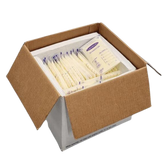Breastfeeding can feel like a marathon at the best of times, and the idea of doing it while pregnant might sound more like an ultramarathon you never signed up for. Take a deep breath. We’re here to tell you that yes, it’s possible, it’s usually safe, and no, you don’t have to figure it out alone.
For mums awaiting their very first bub, the focus is often on preparation, collecting that precious colostrum, mastering a gentle hand-expression technique, and wrapping your head around the hormonal roller-coaster that’s about to begin.
Meanwhile, many Aussie mums find themselves already nursing an older baby or toddler when a new pregnancy test flashes positive. Suddenly, you’re wondering whether your supply will dip, how changing hormones might affect your firstborn’s latch, and whether continuing to breastfeed is safe for the tiny passenger on board.
Rest assured, with the right information and support, plenty of families navigate this chapter smoothly, some keep nursing throughout, others choose a gentle wean, and all make the choice that feels healthiest for everyone involved.

Is Breastfeeding While Pregnant Safe?
Short answer? For most healthy pregnancies, yes. But let’s unpack why it’s usually fine and when it’s smart to pause and discuss it with your care team.
Hormonal Shifts & What It Does To Your Milk
Pregnancy hormones like oestrogen and progesterone could slightly dial down breastmilk volume, often from the late first to mid-second trimester. Babies might notice a saltier taste as early colostrum starts forming around 16–20 weeks, which can explain sudden fussiness or shorter feed sessions. Sometimes, as your pregnancy progresses and your milk starts tasting a little different, your first kiddo may naturally choose to wean before their baby brother or sister arrives.
Normal vs High-Risk Pregnancies
Midwives in Australia generally give the green light to breastfeeding during an uncomplicated pregnancy. But caution should be taken if you’ve had:
- a history of pre-term labour or significant cervical shortening
- unexplained vaginal bleeding, placenta praevia, or ruptured membranes
- medically advised pelvic rest for other reasons
In these scenarios, the gentle uterine tightenings triggered by breastfeeding, thanks to oxytocin, could be a concern. Your obstetrician, GP, or IBCLC will weigh your individual risk and may suggest partial or full weaning, at least temporarily.
Will breastfeeding cause a miscarriage?
No, current research and statements from the Australian Breastfeeding Association reassure that in low-risk pregnancies, continuing to breastfeed doesn’t raise miscarriage rates. The oxytocin released during nursing is far milder than the synthetic dose used to induce labour.
Still, if you’re ever uneasy about cramping or spotting, trust your gut and ring your midwife.
Physical & Emotional Realities of Breastfeeding While Pregnant

Pregnancy turns every sensation up a notch, so it’s no surprise that breastfeeding can feel more intense, both physically and emotionally.
Physical Changes of Breastfeeding While Pregnant
-
Nipple soreness & tenderness: Hormone-driven sensitivity can make even gentle latching feel like sandpaper. A warm compress before feeds, lanolin afterwards, and experimenting with a wider latch often help.
-
Nausea or “morning” sickness: Feeding in a cool, well-ventilated room (or even lying on your side) can curb the queasiness. Keep water and a bland snack handy so you don’t finish a feed feeling woozy.
-
Fatigue, fatigue, fatigue: A cluster-feeding baby plus first-trimester exhaustion is no joke. If you’re exhausted, consider shorter sessions, or let your partner settle bub with cuddles while you nap.
-
Bump-friendly positions: As your belly blossoms, side-lying, laid-back, or koala hold takes pressure off your abdomen and your back.
Emotional Changes of Breastfeeding While Pregnant
It’s perfectly normal to swing from “nursing goddess” to “get-off-me-now” in a single day.
-
Nursing aversion:
A sudden itchiness or aggravation while feeding is a common symptom. Deep breaths, distraction (podcast, mindful counting), or setting time-limited “countdowns” can take the edge off.
-
Mum-guilt & outside opinions:
Consult with your doctor or IBCLC if guilt is overwhelming your instincts. Remember, you can decide if you want to continue breastfeeding your eldest or try partial or full weaning.
-
Toddler dynamics:
While pregnancy hormones have you riding your own wave of feelings, remember your toddler is meeting the world for the first time. Tantrums often collide with our shorter patience spans, turning minor moments into meltdowns. When things start to spiral, pause to co-regulate: deep breath for you, deep breath for them, then offer connection; maybe a “big-kid cuddle,” a quick story, or a choice (“milk now or after playtime?”). Giving them a sense of control can soften the edges for both of you.
-
Self-care tactics:
Hydrate, snack, and schedule small joy breaks (five minutes of legs-up-the-wall or a quick walk). If supply dips on tough days, having a shelf-stable, freeze-dried breast-milk stash can be a sanity saver.
Be gentle with your body and your heart; both are doing double duty right now.
Practical Strategies for Breastfeeding Through Pregnancy

1. Tweak the Routine
-
Frequency: Many toddlers self-adjust by feeding shorter or less often when milk flavour shifts from mature milk back to colostrum to prepare for the new baby. Let them set the pace where possible, you’ll save energy and avoid power struggles.
-
Positions: Side-lying for sleepy feeds or a laid-back recline can spare tender nipples and a stretching belly. Rotate cushions and footstools so your back isn’t doing all the heavy lifting.
-
Predictability: Toddlers thrive on “what’s next.” Pair feeds with cues like a favourite song or story; over time, they’ll accept a gentle, scheduled rhythm, crucial when you’re running low on fuel and patience.
-
Tip: Watch for early hunger cues (rooting, hand-to-mouth) and catch feeds before a full-blown “hangry” cry keeps sessions calmer for everyone.
2. Fuel for Two (and a Half)
-
Nutrition: While you won’t really eat for 2 when pregnant, it’s important to stay well-nourished. Aim for balanced snacks every 2–3 hours with protein (cheese, hummus), complex carbs (wholegrain crackers), and healthy fats (avocado). Iron and calcium needs jump in pregnancy, so chat to your GP or midwife about supplements if you have specific dietary requirements.
-
Hydration: Keep a 1L water bottle within arm’s reach at each feed; pregnancy increases blood volume, and breastfeeding wicks fluid fast.
-
Rest: Ten-minute power naps trump scrolling socials when fatigue hits. Tag-team with a partner, grandparent, or reliable mate for a toddler park run so you can snooze, your milk supply (and mood) will thank you.
3. Pumping & Stashing: Your Supply Safety Net
-
When to Pump: If your toddler suddenly weans or you need milk for a caregiver, start a gentle pumping session once a day in the morning (usually the time when your breasts are at their fullest).
-
Boosting Supply: A focused power pumping routine can mimic a growth spurt and stimulate the production of extra milk. This extra breastmilk can be stashed for your baby to lengthen the gradual weaning process.
-
Building a Backup: Returning to work or need a rainy-day reserve? Build your breast milk stash and stockpile efficiently. And if freezer space is already jam-packed with lasagna, consider turning surplus into shelf-stable powder via our freeze-drying service with a three-year lifespan, zero ice-crystals, and no late-night freezer Tetris.
- Mix-and-Match Feeding: On especially exhausted days, mixing expressed milk with a small formula top-up can take the pressure off. Mixed feeding can be a significant help if you have a partner or grandparent involved in child rearing.
A few small tweaks, better posture, strategic snacks, and a smart stash plan can keep breastfeeding sustainable right through to your due date. Remember, you set the pace; these tools are here to serve you and your baby's breastfeeding needs.
Preparing for the Next Chapter: Tandem Nursing or Gentle Weaning

Tandem Nursing
If you picture yourself breastfeeding a newborn on one side while your toddler snuggles in on the other, here are a few ground rules to keep everyone happy:
-
Set loving boundaries. Decide ahead which feeds are “new-baby only” (often the middle-of-the-night) and which are open to both kids. A simple script—“Baby first, then it’s your turn”—builds predictability for your toddler.
-
Gear that helps. A wide, U-shaped twin-feeding pillow or two regular pillows stacked under each arm saves your back. Keep a water bottle, snacks, and your phone within reach; once you’re pinned under two nurslings, the couch feels miles away.
-
Prep the soon-to-be big sibling. Read picture books about new babies, practise waiting with a cuddly toy, and involve them (“Can you pass the burp cloth?”). Highlight special one-on-one rituals, like a bedtime song, to prevent the dreaded witching hour jealousy when the new baby arrives.
Signs It Might Be Time to Wean
Sometimes pregnancy discomfort or dwindling supply signals it’s time to wrap up nursing your older child.
-
Mother-led vs child-led. If you’re ready before they are, gradual steps, follow the principle of “don’t offer but don’t refuse,” shortening feeds with a gentle countdown, or substituting a snack and cuddle to ease the transition.
-
Gentle techniques. Start by dropping the least-favourite feed, distract with outdoor play at usual nursing times, or swap in a special sippy cup of expressed or freeze-dried milk so they still taste the familiar comfort.
- Emotional support. Toddlers mourn change in funny ways. Clinginess, stalling or even epic tears. Validate your eldest's feelings, offer extra skin-to-skin contact, and enlist the help of partners or other caregivers for fresh distractions. For you, a quick debrief with a lactation consultant, or simply another mum who’s been there, can lighten the load.
Whichever path you choose, remember: you’re not “quitting” or “doubling down” - you’re steering your family toward what feels sustainable and loving for everyone as the new baby’s arrival draws near.
Trust Your Body and Trust Your Bub

Pregnancy and breastfeeding together can feel like a juggling act, yet thousands of Aussie families manage it every year. Here are the touchstones to keep in your back pocket:
- Safety first: In a healthy pregnancy, nursing rarely raises miscarriage or pre-term risk; when in doubt, check with your midwife or GP.
- Listen to your body: Sore nipples, fatigue, or supply dips are signals to slow down, tweak positions, or trim feed lengths.
- Fuel the machine: Smart snacks, litres of water, and power naps keep both milk production and mum-mood humming.
- Plan for the next phase: Decide early whether you’ll tandem nurse or wean, set gentle boundaries, and involve your toddler in the new-baby countdown.
- Build a buffer: Whether you’re prepping for the hospital, work, or just the odd low-supply day, a small expressed stash, especially in shelf-stable, freeze-dried form, makes life infinitely easier.
Most of all, remember that breastfeeding is a relationship, not a rulebook. Adjust, adapt, and lean on evidence-based guidance (and the occasional best-friend pep talk) as your growing family finds its rhythm. You’ve got this, and we’re here to help at every latch, pump, and cuddle along the way.
Frequently Asked Questions About Breastfeeding While Pregnant
Can I get pregnant while I’m still nursing?
Yes. Breastfeeding can delay ovulation, but it’s not fool-proof birth control, especially once bub starts sleeping longer or solids enter the mix. If avoiding pregnancy, use an additional contraception method recommended by your GP.
Which month does breast milk (colostrum) start during pregnancy?
Colostrum production typically ramps up between weeks 16 and 20. You may notice thicker, yellowish drops or a change in taste that your toddler might comment on.
Early pregnancy symptoms while breastfeeding, what’s normal?
Heightened nipple sensitivity, sudden supply dips, and extra fatigue are common. They’re usually hormone-related and not a sign that something’s wrong with the pregnancy.
Can breastfeeding cause miscarriage?
Current evidence shows no increased risk in healthy, low-risk pregnancies. If you have a history of miscarriage, pre-term labour, or pregnancy complications, discuss personalised guidance with your obstetric team.
Can I pump during pregnancy, and when should I start?
Absolutely, if you need milk for a caregiver, want a small emergency stash, or anticipate supply drops. Start with one gentle pump in the morning when breasts feel fullest. Listen to your body; discomfort or contractions are a cue to stop and consult your IBCLC.
How can I increase milk supply while pregnant?
Offer the breast more often, try a short power-pumping block, rest whenever possible, hydrate like it’s your job, and lean on nutrient-dense snacks. Remember that hormone shifts naturally reduce volume for many mums—sometimes the goal is maintaining, not boosting.
Are lactation cookies safe in pregnancy?
Generally, yes, if the ingredients are pregnancy-friendly (think oats, flaxseed, brewer’s yeast). Skip any cookie containing herbal galactagogues that aren’t recommended in pregnancy (e.g., large amounts of fenugreek) unless cleared by your healthcare provider.
What are the tell-tale signs of pregnancy while breastfeeding?
Besides a missed period, mums often report extra nipple pain, abrupt aversion to feeding, a toddler fussing at the breast (milk tastes saltier), and sudden, unexplained fatigue. A home pregnancy test remains the quickest way to confirm.







